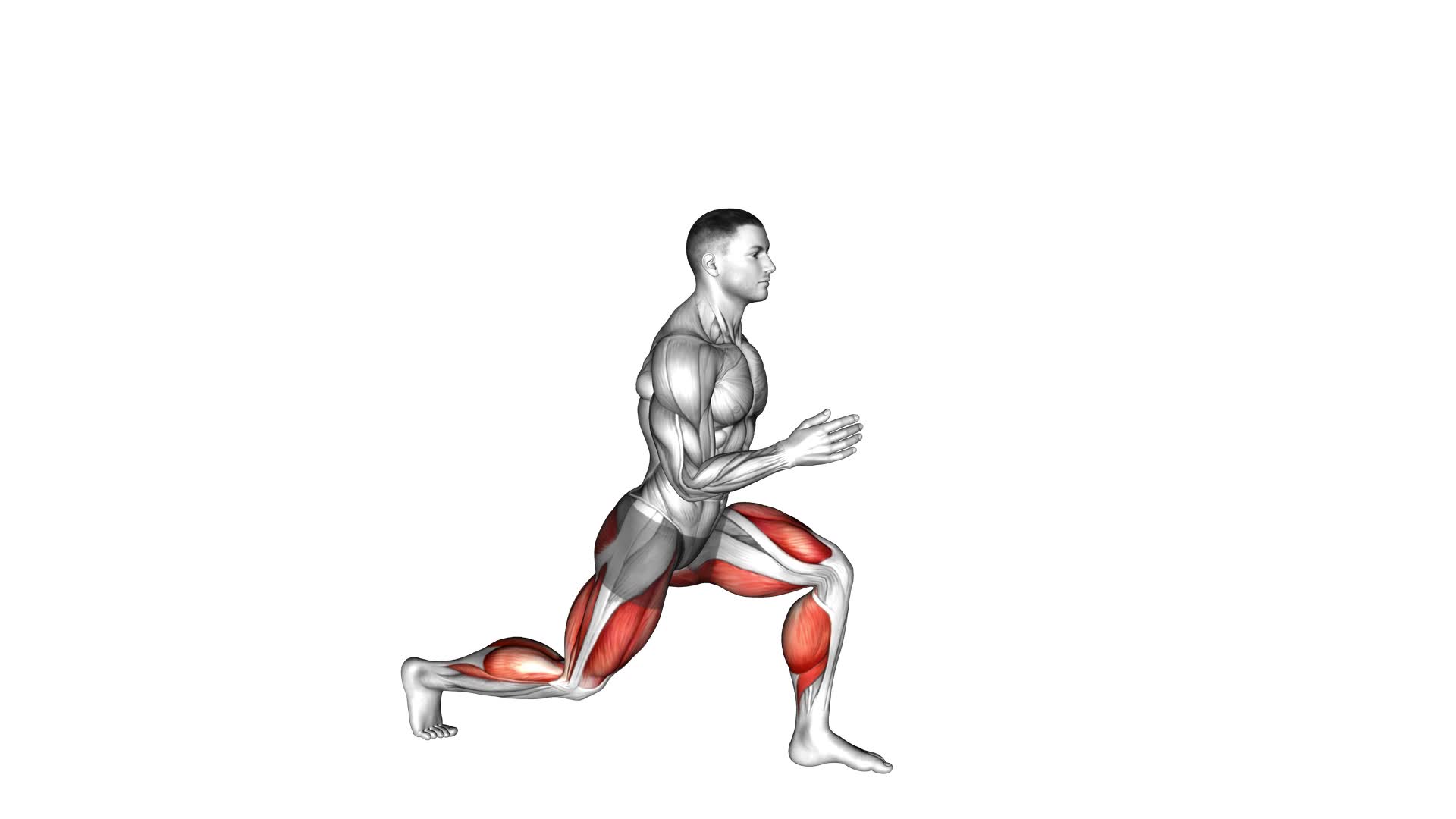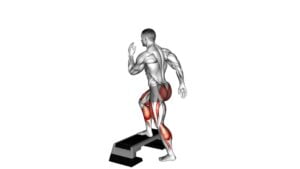Jump Split (male) – Video Exercise Guide & Tips

Looking to level up your workout routine? Check out this video exercise guide and tips for the jump split (male).
Watch This Exercise Video
Get ready to boost your lower body strength and flexibility with this explosive move. Learn the proper form and technique, common mistakes to avoid, and modifications to challenge yourself.
Whether you're a beginner or advanced, incorporating the jump split into your routine will take your fitness game to new heights.
Let's get jumping!
Key Takeaways
- The jump split exercise improves explosive power and lower body strength, enhances the ability to generate force quickly, increases flexibility in the hips and hamstrings, and provides cardiovascular benefits.
- Proper form and technique for the jump split include paying attention to foot positioning for balance and precision, maintaining a stable and balanced stance for power generation, focusing on core stability, and avoiding overextension to prevent strain or imbalances.
- The importance of foot positioning in the jump split exercise is to start with feet shoulder-width apart for stability, keep toes pointed forward to engage leg muscles, leap with feet pointed and parallel to the ground, and land with feet in the same position to reduce the risk of injury.
- Core stability is essential in the jump split exercise to maintain proper form and technique. Incorporating exercises like planks and Russian twists can target muscles in the abdomen, lower back, and hips, improve posture, reduce the risk of injury, and increase power and athletic performance.
Benefits of the Jump Split Exercise
One major benefit of the jump split exercise is that it helps improve your explosive power and lower body strength. This exercise requires you to jump and land in a split position, engaging your leg muscles and core. By regularly incorporating jump splits into your workout routine, you can enhance your ability to generate force quickly, which is essential for activities like sprinting, jumping, and other explosive movements.
Additionally, the jump split exercise also contributes to improving flexibility. The split position requires a considerable amount of hip and hamstring flexibility, and performing this exercise regularly can help increase your range of motion in these areas.
Another advantage of the jump split exercise is the cardiovascular benefits it provides. Jumping and performing explosive movements elevate your heart rate, helping to improve your cardiovascular fitness. This can lead to better endurance and overall cardiovascular health.
In the subsequent section, we'll discuss the proper form and technique for the jump split exercise, ensuring that you maximize its benefits while minimizing the risk of injury.
Proper Form and Technique for the Jump Split
To perform the jump split exercise with proper form and technique, it's important to pay attention to your foot positioning. Maintaining a stable and balanced stance will help you generate power and avoid injury.
Additionally, core stability is essential in executing this exercise effectively, as it provides a strong foundation for your movements.
Lastly, it's crucial to avoid overextension to minimize the risk of strain or muscle imbalances.
Foot Positioning Importance
Ensure that your feet are properly positioned for the jump split by following these guidelines. Proper foot positioning is essential for maintaining balance and executing the jump split with precision.
Start by standing with your feet shoulder-width apart, ensuring that your weight is evenly distributed between both feet. This will provide a stable foundation for the jump split.
As you prepare to jump, bend your knees slightly and keep your toes pointed forward. This will engage your leg muscles and help you generate power for the jump.
As you leap into the air, keep your feet pointed and parallel to the ground. Landing with your feet in the same position as the starting point will ensure a smooth transition and reduce the risk of injury.
Core Stability Essential
To execute the jump split with proper form and technique, you need to focus on maintaining core stability. Core stability refers to the ability of the muscles in your torso to support and control your spine during movement. It's essential for performing exercises like the jump split effectively and safely.
To improve your core stability, incorporate exercises such as planks, Russian twists, and dead bugs into your workout routine. These exercises target the muscles in your abdomen, lower back, and hips, which are crucial for maintaining stability and balance.
By enhancing your core stability, you can reap several benefits, including improved posture, reduced risk of injury, increased power and strength, and enhanced athletic performance.
Avoid Overextension Risks
Maintain proper form and technique to avoid overextension risks while performing the jump split. Overextension prevention is crucial for injury prevention during this exercise.
To avoid overextending your joints, it's important to keep your body aligned and engage your core muscles. Start by standing with your feet hip-width apart and your knees slightly bent.
As you jump, land with one leg forward and the other leg back, keeping a 90-degree angle at both knees. Ensure that your front knee stays directly above your ankle, and your back knee hovers just above the ground. Avoid letting your front knee extend past your toes, as this can put excessive strain on your joints.
Equipment Needed for the Jump Split Exercise
You will need certain equipment for the Jump Split exercise. Here are four items you should have in order to perform this exercise effectively:
- Exercise Mat: A thick exercise mat provides cushioning and support for your joints during the Jump Split exercise. It helps to reduce the impact on your knees and ankles, making the exercise more comfortable and safe.
- Comfortable Athletic Shoes: Wearing proper athletic shoes is crucial for performing the Jump Split exercise. Choose shoes that provide good support and stability to prevent any injuries or strain on your feet.
- Resistance Bands: Incorporating resistance bands into your Jump Split routine can help increase the intensity of the exercise. The bands add resistance, challenging your muscles and promoting strength and flexibility.
- Stability Ball: A stability ball can be used to add an extra element of instability to your Jump Split variations. By balancing on the ball, you engage your core muscles even more, enhancing your overall stability and coordination.
Having the right equipment is essential for a safe and effective Jump Split workout. By using an exercise mat, comfortable athletic shoes, resistance bands, and a stability ball, you can maximize the benefits of this exercise and progress from beginner to advanced jump split variations with confidence.
Common Mistakes to Avoid During the Jump Split
When performing the Jump Split exercise, it's important to avoid common mistakes that can hinder your progress and increase the risk of injury.
One common mistake is neglecting proper technique. It's crucial to maintain proper form throughout the exercise to ensure maximum effectiveness and safety. This includes keeping your back straight, knees slightly bent, and landing softly on the balls of your feet.
Another mistake to avoid is rushing through the exercise. Take your time and focus on each movement to get the most out of the exercise.
Additionally, it's important to avoid overextending your legs during the jump. This can put unnecessary strain on your joints and increase the risk of injury. Keep your movements controlled and within a comfortable range of motion.
Lastly, be mindful of your landing position. Landing with your feet too close together or too far apart can throw off your balance and increase the risk of injury. Aim to land with your feet shoulder-width apart for optimal stability.
Modifications and Progressions for the Jump Split
Now it's time to take your jump split to the next level with some advanced modifications.
These modifications will help you unleash your full potential and challenge your body in new ways.
However, it's important to prioritize safety precautions to avoid any potential injuries.
Advanced Modifications: Unleashing Your Potential
To enhance your performance in the jump split exercise, incorporate advanced modifications and progressions that will help unleash your full potential. Here are four advanced modifications to take your jump split to the next level:
- Plyometric Jump Split: Add explosive power to your jump split by incorporating plyometric movements. Start in a deep lunge position and explosively jump, switching legs mid-air to land in the opposite lunge position. Repeat this movement in a continuous, rapid motion.
- Weighted Jump Split: Increase the intensity of your jump split by adding weights. Hold dumbbells or a weighted vest while performing the exercise. The added resistance challenges your muscles and helps build strength and power.
- Elevated Jump Split: Elevate one leg on a step or box to increase the range of motion and intensity of the exercise. This modification targets the muscles in your legs and glutes even more effectively.
- Single-Leg Jump Split: Challenge your balance and stability by performing the jump split on one leg. This advanced modification requires greater strength and control, helping to improve your overall athleticism.
Incorporating these advanced modifications into your jump split routine will push your limits and unlock your full potential.
Safety Precautions: Avoiding Injuries
To avoid injuries while performing the jump split exercise, prioritize proper form and technique. Preventing injuries is crucial for a safe and effective workout.
Before attempting the jump split, it's important to warm up your body properly. Engage in dynamic stretches and exercises that target the muscles you'll be using during the exercise. This will help increase blood flow, flexibility, and range of motion, reducing the risk of strains or sprains.
Additionally, make sure to start with a lower intensity version of the jump split and gradually progress to more advanced modifications. This will allow your body to adapt and strengthen the necessary muscles, minimizing the risk of overexertion or strain.
Tracking Progress: Measuring Improvement
To track your progress and measure improvement in the jump split exercise, you can make modifications and progressions as you become more comfortable and proficient. Here are four ways you can measure your progress and set goals:
- Increase the height of your jump: Start by jumping off the ground and gradually work towards jumping higher each time. This will help you gauge your leg strength and explosiveness.
- Improve your landing technique: Focus on landing softly and with control. Aim to land in a deep split position with proper alignment. As you improve your landing technique, you'll notice increased flexibility and stability.
- Increase the number of repetitions: Begin with a comfortable number of jump splits and gradually increase the repetitions as you get stronger. This will help you build endurance and track your progress over time.
- Decrease the rest time between sets: Challenge yourself by reducing the rest time between sets. This will push your cardiovascular capacity and improve your overall fitness level.
Tips for Incorporating the Jump Split Into Your Workout Routine
How can you effectively incorporate the Jump Split into your workout routine?
The Jump Split is a plyometric exercise that can help increase explosive power in your lower body.
To incorporate this exercise into your routine, start by warming up your muscles with some light cardio exercises like jogging or jumping jacks. Once you're warmed up, find a clear space where you can perform the exercise safely.
Stand with your feet shoulder-width apart and lower your body into a squat position. From here, explode upwards into a jump, extending your legs and arms out to the sides in a split position. Land softly with control, bending your knees to absorb the impact.
Aim for 3 sets of 10 to 12 repetitions, resting for 1 to 2 minutes between sets. As you become more comfortable with the exercise, you can increase the intensity by jumping higher or adding weights to your hands.
Remember to listen to your body and stop if you feel any pain or discomfort. Incorporating the Jump Split into your workout routine can help you improve your explosive power and enhance your athletic performance.
Frequently Asked Questions
How Many Calories Does the Jump Split Exercise Burn?
The jump split exercise is a great way to burn calories and get your heart rate up. It's an intense move that requires explosive power and coordination.
Can the Jump Split Exercise Help Improve Vertical Jump Height?
The jump split exercise can be a great way to improve your vertical jump height. By incorporating jump split variations into your plyometric workouts, you can strengthen the muscles used for jumping and increase explosive power.
Plyometric exercises like the jump split are designed to improve athletic performance by enhancing speed, agility, and vertical jump.
Is the Jump Split Exercise Suitable for Beginners?
The jump split exercise can be a challenging move, but it's not necessarily suitable for beginners. However, there are modifications you can make to make it more accessible.
Before attempting the jump split, it's important to have a solid foundation of strength and stability. This exercise can help improve your vertical jump height by targeting your lower body muscles and explosiveness.
The benefits of the jump split include increased power, agility, and overall athletic performance.
What Muscles Does the Jump Split Exercise Primarily Target?
The jump split exercise primarily targets your leg muscles, specifically your quadriceps, hamstrings, and glutes. This exercise can help improve your lower body strength, power, and explosiveness.
Some benefits of the jump split include increasing your vertical jump, enhancing athletic performance, and improving overall lower body stability and balance.
There are also variations of the jump split exercise that you can try to add variety to your workout routine and challenge different muscle groups.
How Often Should the Jump Split Exercise Be Performed for Optimal Results?
To get the optimal results from the jump split exercise, it's important to consider the frequency at which you perform it. By varying the frequency of the jump split exercise, you can challenge your muscles and prevent plateauing.
It's recommended to incorporate the jump split exercise into your workout routine 2-3 times a week. However, listen to your body and adjust the frequency accordingly.
Conclusion
In conclusion, the jump split exercise is a highly beneficial and effective workout for improving lower body strength, balance, and flexibility.
By following proper form and technique, using the necessary equipment, and avoiding common mistakes, you can maximize the benefits of this exercise.
Additionally, there are modifications and progressions available to suit different fitness levels.
Incorporating the jump split into your workout routine can help you achieve your fitness goals and take your training to the next level.

Author
Years ago, the spark of my life’s passion ignited in my mind the moment I stepped into the local gym for the first time. The inaugural bead of perspiration, the initial endeavor, the very first surge of endorphins, and a sense of pride that washed over me post-workout marked the beginning of my deep-seated interest in strength sports, fitness, and sports nutrition. This very curiosity blossomed rapidly into a profound fascination, propelling me to earn a Master’s degree in Physical Education from the Academy of Physical Education in Krakow, followed by a Sports Manager diploma from the Jagiellonian University. My journey of growth led me to gain more specialized qualifications, such as being a certified personal trainer with a focus on sports dietetics, a lifeguard, and an instructor for wellness and corrective gymnastics. Theoretical knowledge paired seamlessly with practical experience, reinforcing my belief that the transformation of individuals under my guidance was also a reflection of my personal growth. This belief holds true even today. Each day, I strive to push the boundaries and explore new realms. These realms gently elevate me to greater heights. The unique combination of passion for my field and the continuous quest for growth fuels my drive to break new ground.



